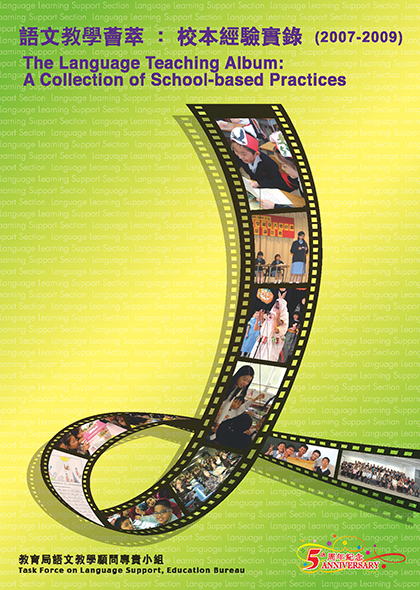|
|
| |
| II. Venturing into the uncharted waters of language education (2004-2009) |
|
|
| |
| III. School-based experiences in Chinese Language Education |
|
|
| |
|
|
| |
V. School-based experiences in English Language Education
|
|
| |
How do we help students build a firm foundation in their English Language learning?
|
| |
-
5.1 Improving reading through explicit teaching of basic sight words
-
5.2 Using drama to increase learning motivation and cater for learner diversity
-
5.3 Reading Pals Programme : A platform for promoting cross-age learning
-
5.4 From reading to developing an integrated school-based curriculum
-
5.5 A holistic approach to arousing students’ interest in reading : Application of "Reading Circles"
-
5.6 The teaching of phonics to help students read fluently and accurately
-
5.7 Strategies of fostering English speaking skills at Key Stage 3
-
5.8 Improving listening skills and responses to spoken texts
-
5.9 Using authentic tasks to help P2 students stretch thinking skills
|
|
|
|
|
How do we plan and make adaptations to facilitate a smooth transition in or across different key stages?
|
| |
- 5.10 Working together to bridge the gap between primary and secondary levels
-
5.11 Promoting language across the curriculum : How English and subject teachers work together to improve students' learning
-
5.12 Diverse ways to fit diverse learning needs
-
5.13 Helping dyslexic students learn English at Key Stage 2
|
|
|
| |
How do we prepare for the New Senior Secondary (NSS) curriculum?
|
| |
-
5.14 Preparing students for the NSS electives through strategic mapping of the junior secondary curriculum
-
5.15 Enhancing students' motivation for learning English and preparing them for the NSS curriculum
-
5.16 Facing the challenges of the NSS curriculum through curriculum planning at junior secondary level
-
5.17 Learning English through Workplace Communication : A trial NSS elective module that caters for learner diversity
-
5.18 Using debate to improve English Language curriculum for students' cognitive and language development
|
|
|
| |
How do we tap different resources to create space to improve English Language learning and teaching?
|
| |
-
5.19 Making effective use of smaller class size to facilitate better teaching and learning
-
5.20 Effective use of funding to effect educational changes
-
5.21 From explicit vocabulary instruction to a fun "Games Day" to celebrate learning
-
5.22 Using a social network for curriculum improvement, enhancement of student learning and leadership development
|
|
|
|
| |
How do we use assessment for learning to enhance English Language learning and teaching?
|
| |
-
5.23 Providing students with a performance stage for knowledge application: Mini-research and oral presentation as the modes of assessment
-
5.24 Use of Territory-wide System Assessment data to inform teaching of reading and writing at Key Stage 2
-
5.25 Enhancing student learning through adoption of assessment for learning
-
5.26 Preparing junior form students for school-based assessment through good questioning and feedback techniques
-
5.27 Language learning through use of questions and feedback
|
|
|
|
| |
| VI. Messages from our partners |
|
|
| |

